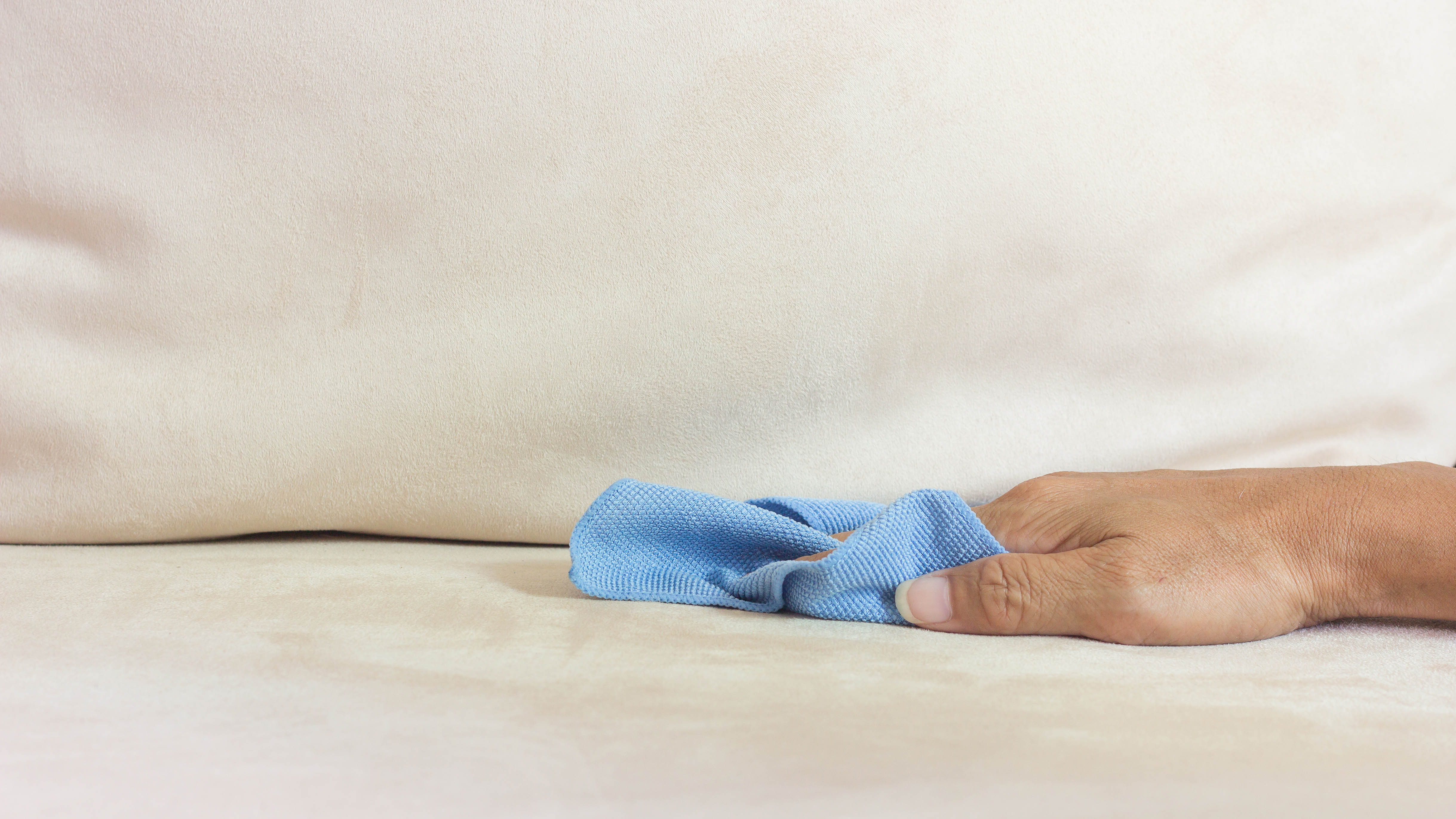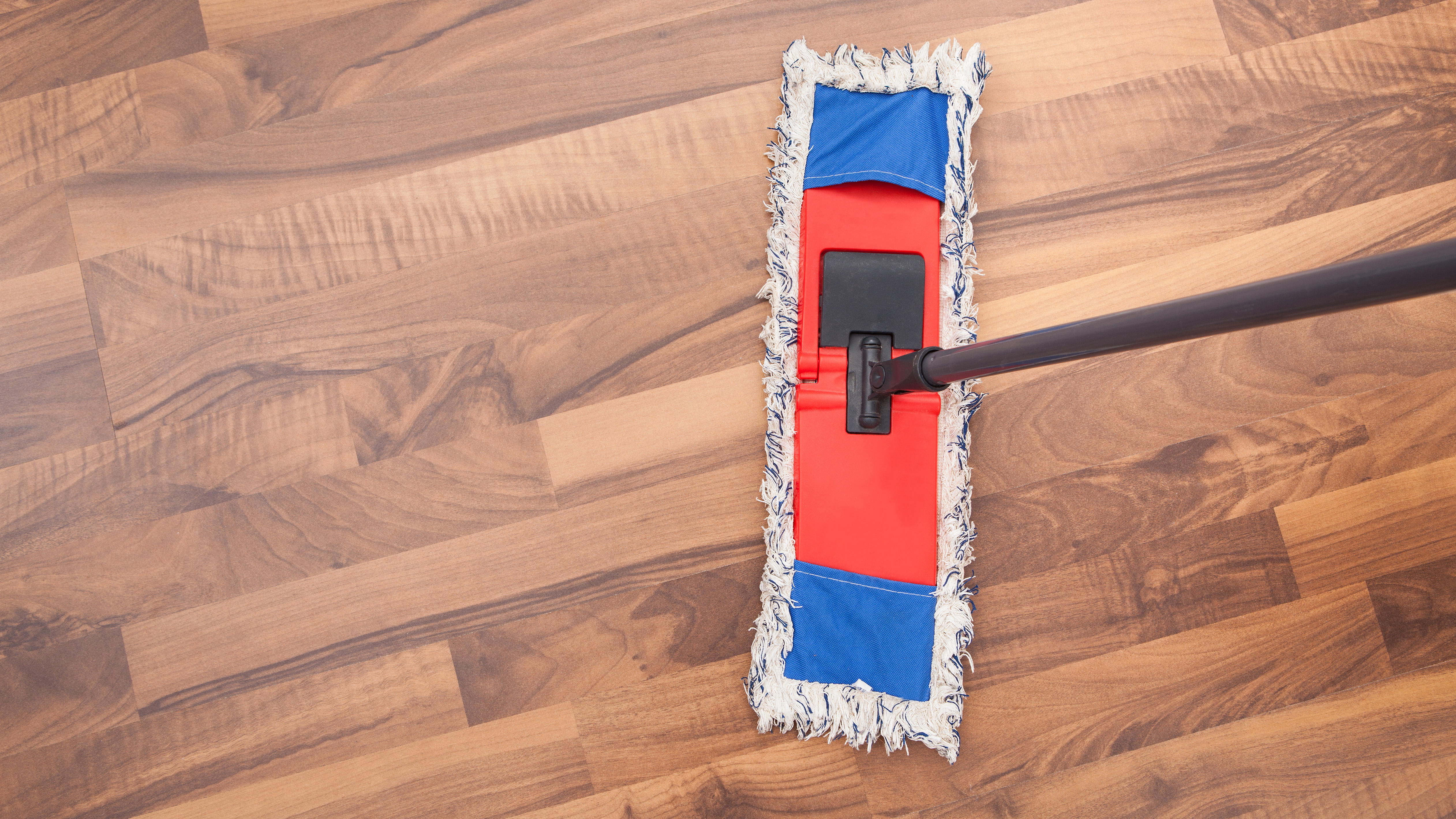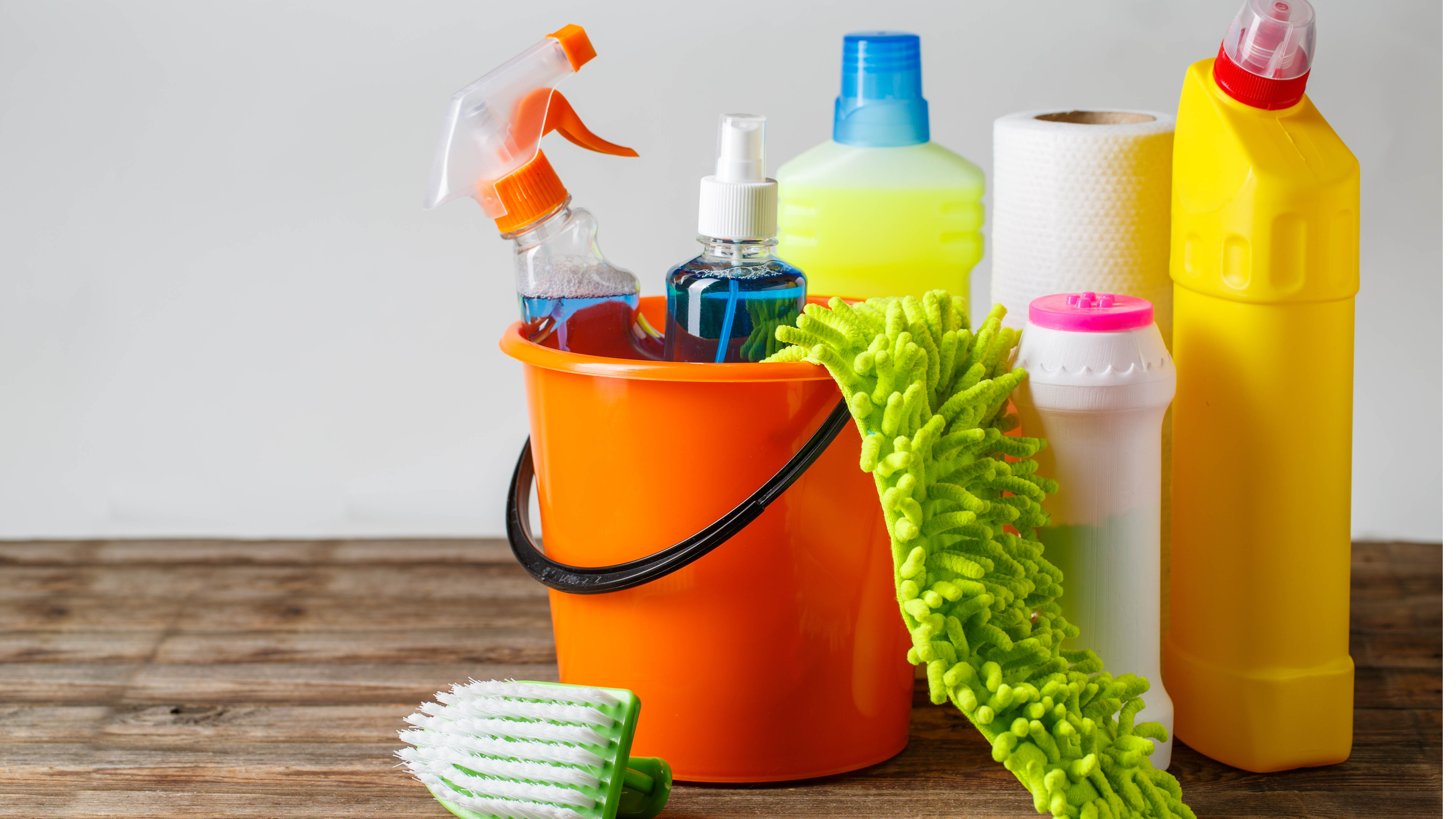10 cleaning mistakes that will ruin your home
Are you making these cleaning mistakes? These bad habits will ruin your home

We all have our own routine on how to clean every room, but you could be making key cleaning mistakes that will ruin your home. As much as our favorite cleaning products do the job, they can actually do more harm than good. What’s more, these cleaning mistakes can lead to damaged floors and surfaces or can ruin soft furnishings or upholstery.
If you have scratches on your hardwood floor, be sure to check out our guide on how to fix scratched wood floors to make them look like new. And to avoid further damage, ditch these 11 cleaning mistakes that can ruin your home, and save money in the long-run. Find out what the three things you should declutter right now, according to the experts.
1. Using bleach to remove stains on a fabric sofa

Stains on a fabric sofa can often be a nightmare if not treated properly. However, never use bleach (or diluted) on a fabric sofa as this can remove the color along with the stain. In addition, bleach can quickly ‘eat’ through the fabric, leaving a small hole after daily use. The last thing you want is to ruin the fabric cover completely or worse still, buy a new sofa.
The safer way to remove stains on a fabric sofa is to mix a solution of one tablespoon of dish soap to ¾ warm water in a spray bottle. Always read the sofa care instructions first before applying directly onto the sofa. If you have a leather sofa however, you may want to check out how to clean a leather couch and remove everyday stains for top tips.
2. Cleaning marble or granite countertops with vinegar

Vinegar is one of the most common, natural cleaning products we tend to use, but there are some things you should never clean with white vinegar. Marble and granite countertops are one of them. White vinegar is highly acidic, and can scratch or wear away at natural stone surfaces. This can cause discoloration to the finish, and ruin its smooth and shiny appearance. Since marble, granite or any other natural stone are expensive materials, repairing any damage can be costly.
The best way to keep your stone countertops sparkling is to use dish soap and warm water. Simple! If you’re in doubt as to what vinegar to use, here is the best vinegar to clean with for great results.
3. Spraying wood polish directly onto furniture

We’ve all been guilty of making this mistake, but never spray cleaning product directly onto unsealed wood furniture. Not only can a build-up of residue soak into the surface causing it to warp, but it can cause discoloration. Plus, this will create more work as you’ll then need to remove the excess polish. Instead, spray your polish onto a clean microfibre cloth and wipe down surfaces evenly.
Get instant access to breaking news, the hottest reviews, great deals and helpful tips.
4. Mopping hardwood floors with too much water

While we want to get our hardwood floors spotless, never soak the floors with water and leave it to dry. Standing water can warp the floors and cause serious damage (and costs) in the long run. The best thing to do after mopping floors is to go over them with a dry cloth or mop up as much excess water as possible. In addition, leave the windows or doors open to speed up the drying process. If you want more tips, check out how to clean hardwood floors without damaging them for the best results.
5. Scrubbing painted surfaces

Stains on painted walls can be unsightly, especially if children use it for their artwork. However, never vigorously scrub at your walls to remove marks or stains. Not only will you potentially remove the paint but can damage the plaster underneath. First, use a non-abrasive sponge and do a spot test on the stain first before you start cleaning the entire area. Ideally, you can create a paste of baking soda with warm water, and blot directly onto the stain, without rubbing too hard. For more top tips, check out how to clean painted walls to remove stains before calling in the decorators.
6. Mixing cleaning products

We all have our favorite cleaning solutions that get the job done, but never (ever!) mix different products. Combining products such as bleach and limescale remover to clean bathrooms could damage your home and can be toxic. Plus certain household cleaners are manufactured in a specific way that should not be used with other products as they can create toxic gases. Always stick to one commercial product or natural solution during cleaning.
7. Scrubbing out carpet stains

Accidental spills on carpets can be annoying. And while the first thing we do is to vigorously scrub stains away, it can actually make them spread. Also, rubbing too hard can damage the carpet fibres by causing them to fray and fade. This will ruin the quality, feel and aesthetics of your carpet. Instead, gently blot the carpet stain with a clean cloth with a dabbing action. If you want to know more on how to remove red wine stains from carpet, clothes and more, follow these handy steps for spotless carpets.
8. Using bleach to clean mold

A common mistake is to use bleach to try and get rid of mold, but it actually makes the problem worse. Mold thrives in damp places such as bathrooms or around window sills, and can also cause serious health problems such as asthma or other respiratory illnesses. While it works well to remove the black stains, the water travels down to the root of the mold and helps it thrive. In addition, applying bleach on mold may even cause it to grow in surrounding areas that were once unaffected, which could also lead to structural damage. The best way to tackle mold issues is to call in a professional to establish the root cause of the mold and best methods to remove it completely.
9. Using abrasive sponges on stainless steel

We often make the mistake of using abrasive sponges to scrub off caked-on food or greasy residue on our stainless steel pots or appliances. In fact, scouring pads and steel wool will only scratch the surface, and damage stovetops. Instead, use non-abrasive, soft pads and dry with a microfibre cloth.
10. Spraying cleaners on electronics

Be it your laptop, phone or any other electronic device, never spray cleaning products directly onto them. Any moisture can get inside electronics, which will cause them to malfunction, break, or worse still, cause sparks. Always use a specialist cleaning kit such as GreatShield Universal Screen Cleaning Kit ($12, Amazon), that is designed to safely clean electronic devices.
Be sure to check out what makes baking soda and vinegar so good at cleaning, and how to clean with vinegar without the smell.

As the Homes Content Editor, Cynthia Lawrence covers all things homes, interior decorating, and garden-related. She has a wealth of editorial experience testing the latest, ‘must-have’ home appliances, writing buying guides and the handy ‘how to’ features.
Her work has been published in various titles including, T3, Top Ten Reviews, Ideal Home, Real Homes, Livingetc. and House Beautiful, amongst many.
With a rather unhealthy obsession for all things homes and interiors, she also has an interior design blog for style inspiration and savvy storage solutions (get rid of that clutter!). When she’s not testing cool products, she’ll be searching online for more decor ideas to spruce up her family home or looking for a great bargain!
